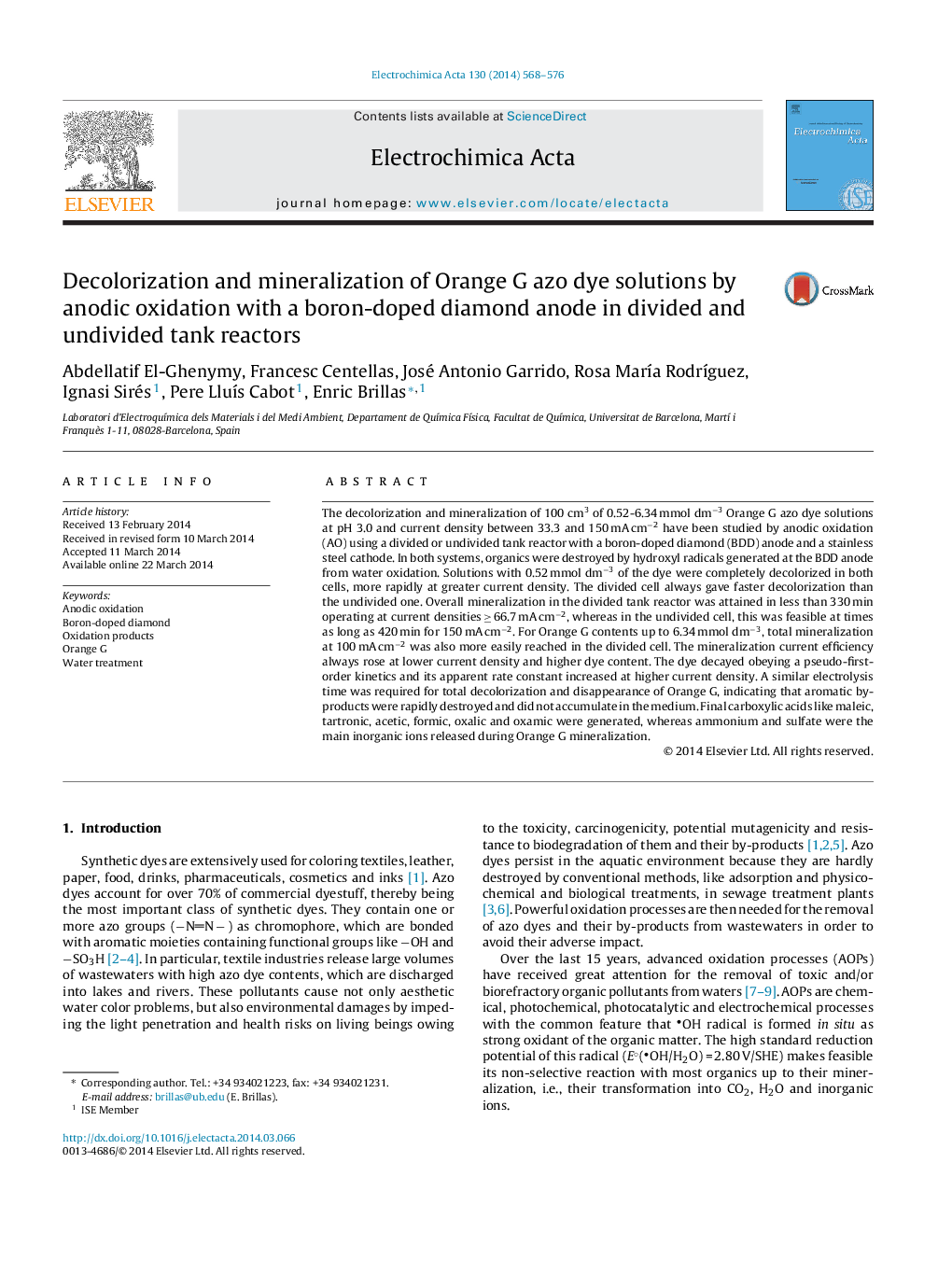| Article ID | Journal | Published Year | Pages | File Type |
|---|---|---|---|---|
| 185892 | Electrochimica Acta | 2014 | 9 Pages |
•Acidic Orange G azo dye solutions completely degraded by anodic oxidation with BDD.•Quicker decolorization and mineralization in a divided than an undivided cell.•Similar time needed for total decolorization and disappearance of Orange G.•Maleic, tartronic, acetic, formic, oxalic and oxamic acids as generated carboxylic acids.•Ammonium and sulfate as main inorganic ions released during dye mineralization.
The decolorization and mineralization of 100 cm3 of 0.52-6.34 mmol dm−3 Orange G azo dye solutions at pH 3.0 and current density between 33.3 and 150 mA cm−2 have been studied by anodic oxidation (AO) using a divided or undivided tank reactor with a boron-doped diamond (BDD) anode and a stainless steel cathode. In both systems, organics were destroyed by hydroxyl radicals generated at the BDD anode from water oxidation. Solutions with 0.52 mmol dm−3 of the dye were completely decolorized in both cells, more rapidly at greater current density. The divided cell always gave faster decolorization than the undivided one. Overall mineralization in the divided tank reactor was attained in less than 330 min operating at current densities ≥ 66.7 mA cm−2, whereas in the undivided cell, this was feasible at times as long as 420 min for 150 mA cm−2. For Orange G contents up to 6.34 mmol dm−3, total mineralization at 100 mA cm−2 was also more easily reached in the divided cell. The mineralization current efficiency always rose at lower current density and higher dye content. The dye decayed obeying a pseudo-first-order kinetics and its apparent rate constant increased at higher current density. A similar electrolysis time was required for total decolorization and disappearance of Orange G, indicating that aromatic by-products were rapidly destroyed and did not accumulate in the medium. Final carboxylic acids like maleic, tartronic, acetic, formic, oxalic and oxamic were generated, whereas ammonium and sulfate were the main inorganic ions released during Orange G mineralization.
